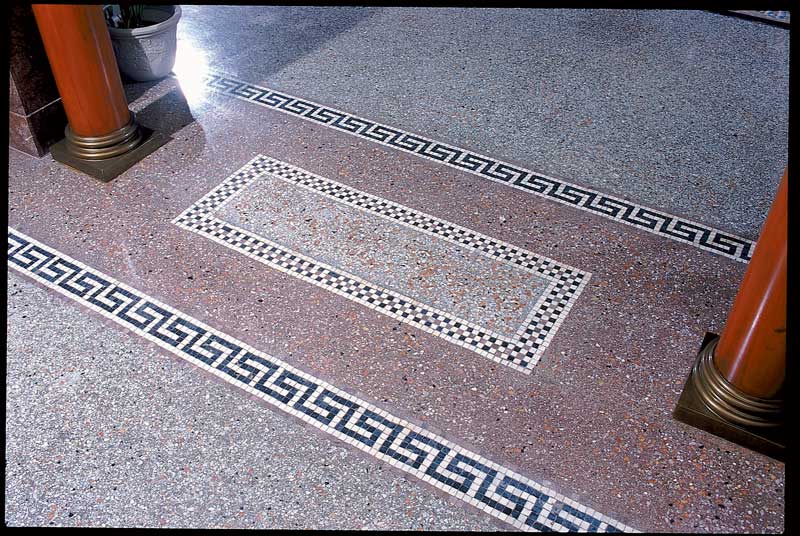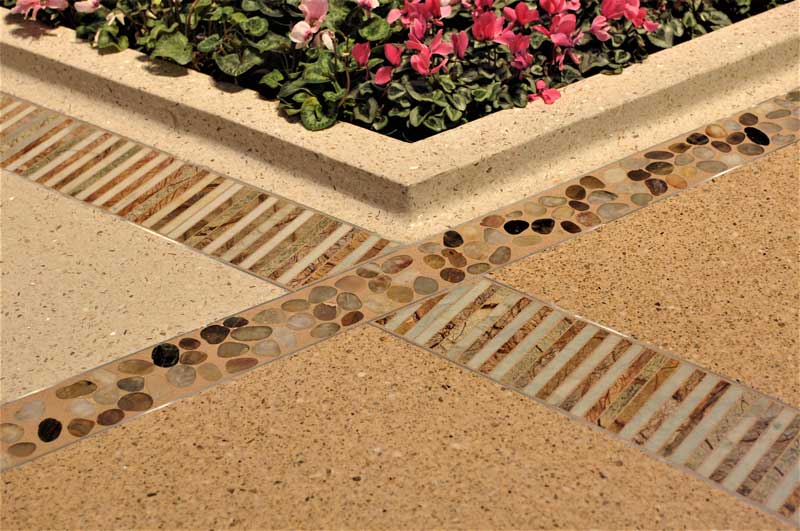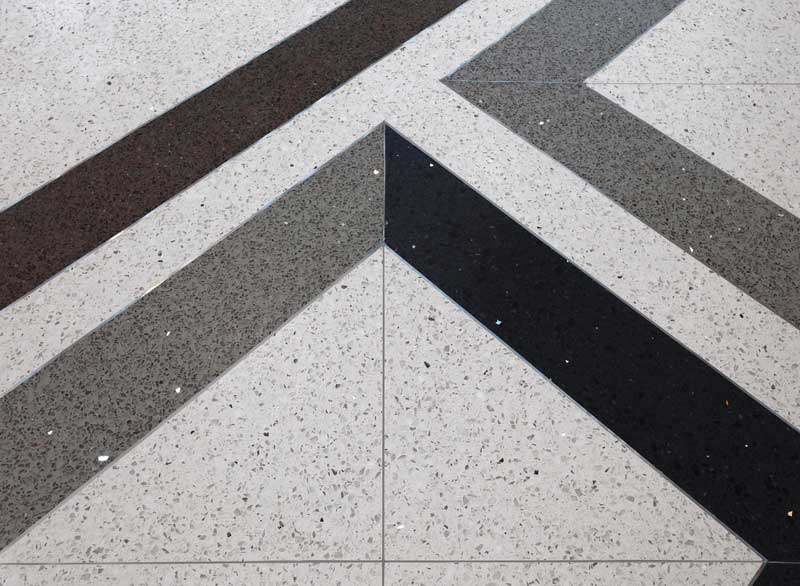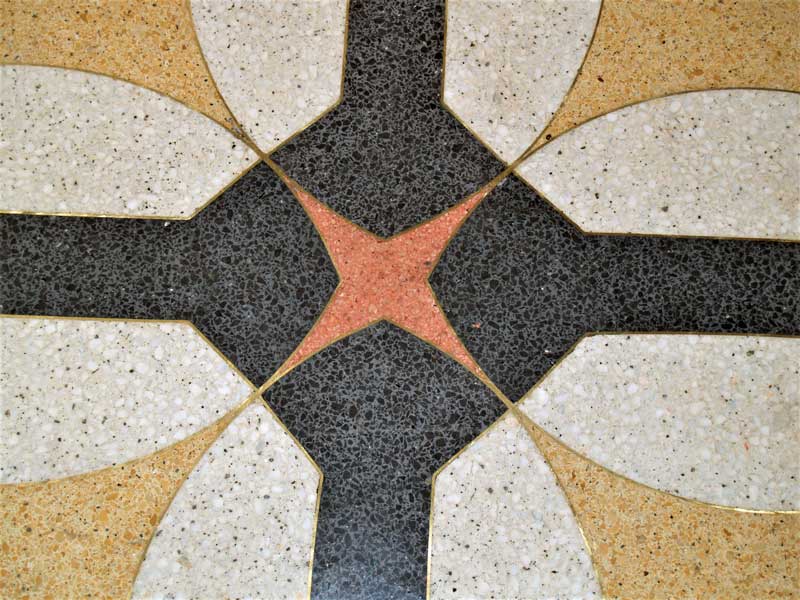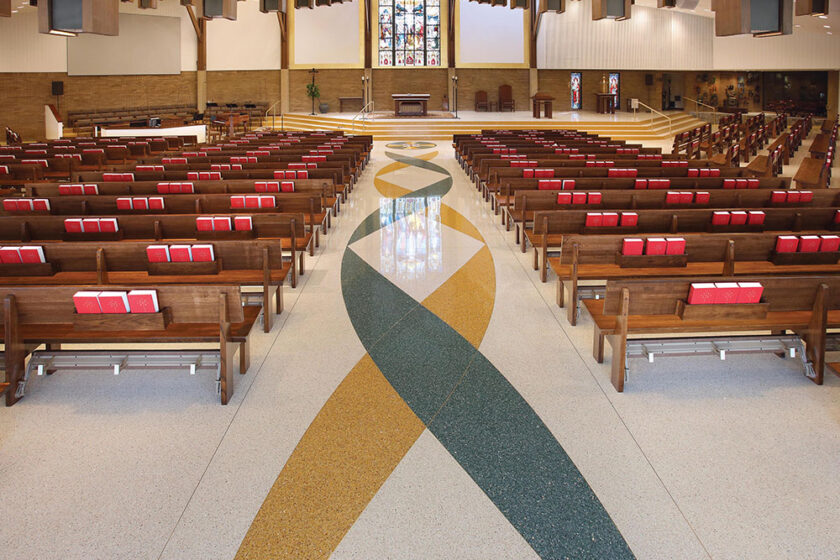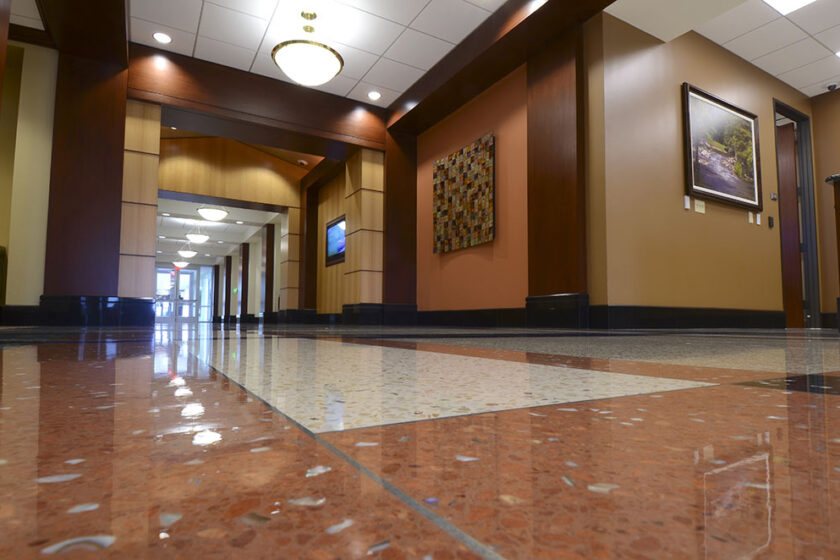Making an Aesthetic Virtue of a Functional Necessity
Historically one of the sole objections to using terrazzo floors was cracking. As far back as 1893, various European patents were issued for methods of installing metal divider strips in terrazzo. By 1921, terrazzo contractor Louis Del Turco of Del Turco and Bros. of Harrington, NJ, obtained a U.S. patent for overcoming cracking by the use of metal dividers to prevent or at least localize cracks. Usually they were made of brass, though copper or zinc were used for aesthetic reasons.
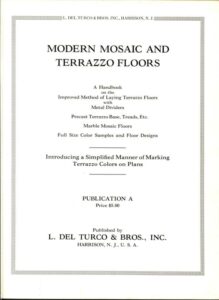 Del Turco’s booklet, “Modern Mosaic and Terrazzo Floors: A Handbook on the Improved Method of Laying Terrazzo Floors with Metal Dividers” provides a snapshot of this development and the general state of the art in terrazzo installation in 1924.
Del Turco’s booklet, “Modern Mosaic and Terrazzo Floors: A Handbook on the Improved Method of Laying Terrazzo Floors with Metal Dividers” provides a snapshot of this development and the general state of the art in terrazzo installation in 1924.
In the early 1920s, prefabricated terrazzo elements were already in general use. Besides expediting the work, precast terrazzo elements were generally of better quality than that laid and finished at the building. Prefabricated waterjet-cut divider strip patterns were, however, still a component of the future in 1924.
Terrazzo strip production as a distinct specialization was already well-established when Del Turco’s book came out. It’s a specialization that has grown over the past three decades, with the vast design potential found in today’s strip technology working in tandem with the flexibility of epoxy terrazzo.
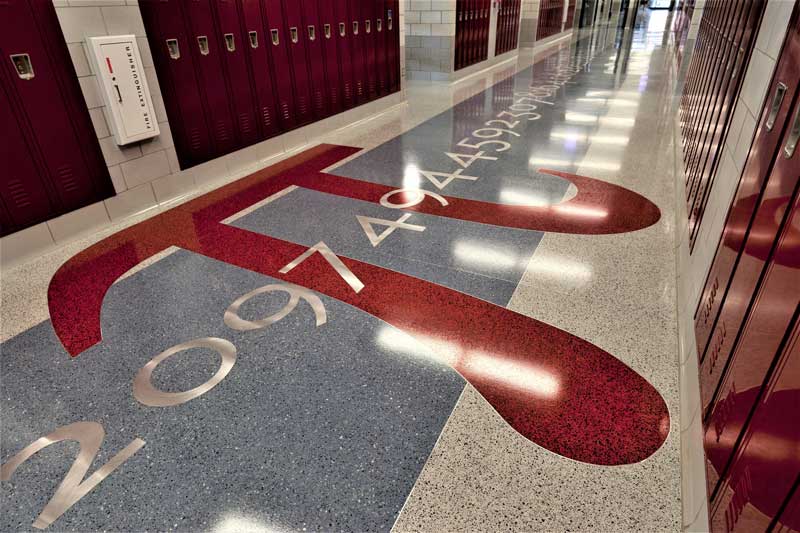
While industry standards for divider strips in traditional cement-based terrazzo still require divider strips every 4’x4’ to counter the movement and shrinkage that leads to cracking, the use of divider strips in epoxy terrazzo is far more nuanced. Design-flexible epoxy has become the system of choice for the vast majority of installations. Divider strip use with epoxy is also far more fluid, highly dependent on the particular job, and now more a question of the desired design pattern. Epoxy terrazzo can even be poured with no divider strips for a free-form, seamless floor.
Since almost its beginning, the terrazzo industry has embraced and honored the divider strip, forging a design element out of a functional necessity.
The earliest terrazzo divider strips are said to have been wood. The strips were installed to separate colors in the floor, then removed, and the void filled. Creative individuals seized the opportunity to add design detail to the floor when the earliest permanent divider strips for separating colors were created from marble cubes. Known as mosaic tessarae, these strips brought their own beauty to the floor.
Aesthetically flexible and attractive options in integrated divider strips began to expand when marble strips, 3/4″ x 3/4″ and 1-3’ in length, were added to terrazzo’s strip repertoire. The advent of metal divider strips eventually ushered in a range of strip widths and materials that exponentially expanded design choice. Today one commonly sees the original, traditional brass strip, which has enjoyed a renaissance in popularity in recent years. White alloy of zinc, or plastic strips are also used for both function and aesthetics.
Today a wide range of sizes of divider strips are available, from the standard 1¼” in 14, 16, or 18 B & S gauge to deeper strips for large-aggregate terrazzo, control joints, and other conditions. Heavy top divider strips are available in widths from ⅛” to ½.”
Divider strips were originally, and many still are, two pieces: brass or zinc on top of a galvanized steel base. While not typical, these strips could come apart and leave the base in the floor in some environments. Around the turn of this century, solid one-piece extrusions went on the market. Prefab expansion joints are also now an option.
The waterjet concept was developed in the 1950s to cut lumber and other soft materials. In the 1970s, the abrasive waterjet with tiny grains of sand multiplied the waterjet’s power to cut metal or stone up to a foot thick. The first commercial waterjet systems were marketed in 1984. In the 1990s, divider strip companies began creating terrazzo floor designs in-house to be shipped to the job site and installed, replacing the fully hand-bent strips of the past. Today’s machines jet speeds are around three times the speed of sound.
Waterjet technology has vastly expanded terrazzo’s design capacity with the prefabrication of increasingly intricate divider strip patterns. Today three NTMA divider strip member companies supply terrazzo contractors with waterjetting services: Creative Edge Master Shop, Manhattan American Terrazzo Strip Company, and National Metal Shapes.
While many techniques used in the terrazzo industry have stayed the same since Del Turco published his booklet, others have continued to evolve. It’s safe to say he would be amazed if he were to visit a terrazzo job site today.

